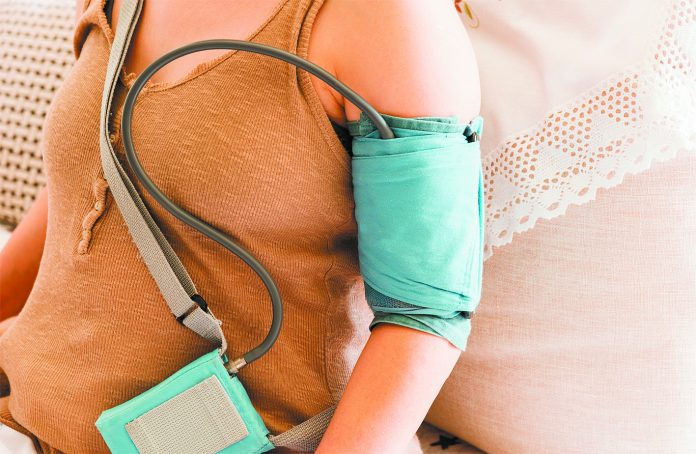When my blood pressure reading consistently came in at around 149/83 my doctor was concerned. That my mother died of a heart attack at around my age now added urgency to her recommendation to get it checked out.
I put it off for a while due to time pressures from work – but I finally realised messing with my heart health was foolish.
Heart disease kills one Australian every 24 minutes and it is also the number 1 killer of women – not the kind of stats with which I (or anyone) should be playing fast and loose.
The result? This morning I’ve been to a pathology lab to be fitted with a 24-hour ambulatory blood pressure monitor and unit. The unit consists of a blood pressure cuff that is worn on my upper arm and connected to the monitor which sits snugly on a strap around my waist and there’s also a connective cord looped over my shoulder.
For the next 24 hours, my heart rate and blood pressure will be measured at 20-30 minute intervals during the day and night. When I feel the cuff inflating and getting tighter, I’m meant to stop and rest until the measurement is complete. Each reading takes around 30-40 seconds.
What does the test show? The blood pressure monitor is measuring the force at which blood is travelling around my body when I’m doing various activities like gym classes, shopping, cooking, working at my desk and sleeping. The results will help my doctor see how my blood pressure changes during the day and – given that high blood pressure is a very important risk factor for heart disease – may use my home measurements to make treatment decisions.
It’s now several days since I finished wearing the blood monitor for the required time – and preliminary results show my pressures are lower than when I get them taken in the GP’s room (white coat syndrome!) and I have mild diastolic hypertension, which my GP says does not need to be medicated. Changing lifestyle factors is pivotal to improvement – for example a diet with more fruit, vegetables and grains and fewer sugary treats is a good place to start.
I’m writing this piece because heart disease can present very differently in women than to men and often goes undiagnosed.
Sometimes there are no early signs of heart disease – so being proactive is key.
I was one of the 40,000 or so people who signed the Heart Foundation’s petition to save the Medicare Heart Health Check, which is a 20-minute appointment with a General Practitioner, aimed at detecting and preventing heart disease in Australians aged 45 and over, or 30 and over if you’re of Aboriginal or Torres Strait Islander descent.
On May 5, the Australian government announced the crucial extension of the Check for another two years, ensuring millions of Australians can continue to access preventative measures to reduce their risk of heart attack or stroke.
Given the Check is free under Medicare, why not book yours in with your GP today?
To find out more about the Heart Health Check visit https://www.heartfoundation.org.au/Heart-health-education/Heart-Health-checks





